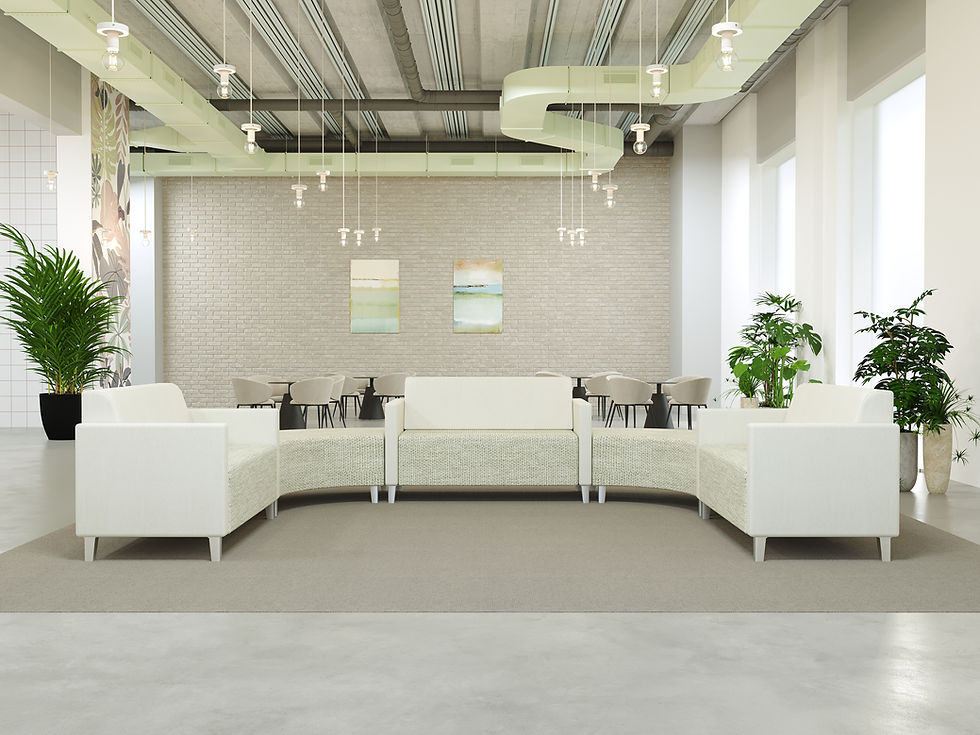Designing for Neurodiversity: How Furniture Can Help Everyone Feel at Home
- ashleygregorashuk
- Jul 7
- 2 min read
Not everyone experiences the world in the same way—and that’s a beautiful thing. Neurodiversity includes a wide range of brain wiring, from autism and ADHD to dyslexia and sensory processing differences. And just like no two brains are the same, no two people feel comfortable in the exact same type of space.
So, how do we create spaces that feel welcoming, calming, and supportive for everyone, especially for those who process the world a little differently?
Let’s talk furniture. (Yep, your lounge chairs might be doing more than you think.)
1. Soft Seating = Soft Landing

For many neurodivergent individuals, environments can get overwhelming fast. Bright lights, noise, cluttered visuals—it’s a lot. That’s where soft seating swoops in like a cozy superhero. Plush, comfortable chairs and modular seating options can create small, defined zones that feel safer and more manageable.
Collections like our Tub or Ira give users a chance to tuck into a personal nook—whether it’s to recharge, reset, or simply take a breather.
2. Acoustic Awareness Matters

Open spaces can get loud. But the right furniture can help absorb sound, which keeps environments calmer and more manageable. Upholstered pieces, high-back lounge chairs, and even the strategic placement of soft elements like ottomans can reduce echo and noise pollution.
Think of it like a sensory buffer. (Because sometimes, quiet is the ultimate comfort.)
3. Zones, Pods & Personal Bubbles

Everyone needs different levels of stimulation. Some people focus better in a tucked-away corner, while others thrive in communal areas. Offering a mix of solo seating, collaborative lounges, and transitional zones gives people the power to choose what feels right for them.
Pro tip: Modular furniture like Flexxform’s Ion makes it super easy to create private pods or open lounge spots depending on what’s needed. Flexible furniture = flexible thinking.
4. Keep It Calm, Not Clinical

Soothing colors, rounded edges, natural shapes—these design elements aren’t just trendy. They can be incredibly grounding for neurodivergent users. Avoid harsh lines, fluorescent lighting, and anything too overstimulating.
Soft seating with curved forms (like our Koa collection) can help a space feel as calm as it looks.
5. Freedom to Fidget (It’s a Good Thing!)

People with ADHD, autism, and other neurodivergent traits often self-regulate through movement—fidgeting, rocking, tapping. Giving users room to move, perch, or reposition themselves comfortably makes a huge difference.
That’s where options like benches, swivels, and movable ottomans come in. A chair that supports movement? Chef’s kiss. 👌
Let’s Rethink “One Size Fits All”
Designing for neurodiversity isn’t just thoughtful—it’s essential. And when we build spaces with inclusion in mind, everyone benefits. The right furniture can reduce stress, improve focus, and support well-being for users of all kinds.
At Flexxform, we believe soft seating isn’t just about comfort—it’s about connection, safety, and empowerment. Ready to create spaces where everyone feels at home? We’ve got your back (literally).








Comments